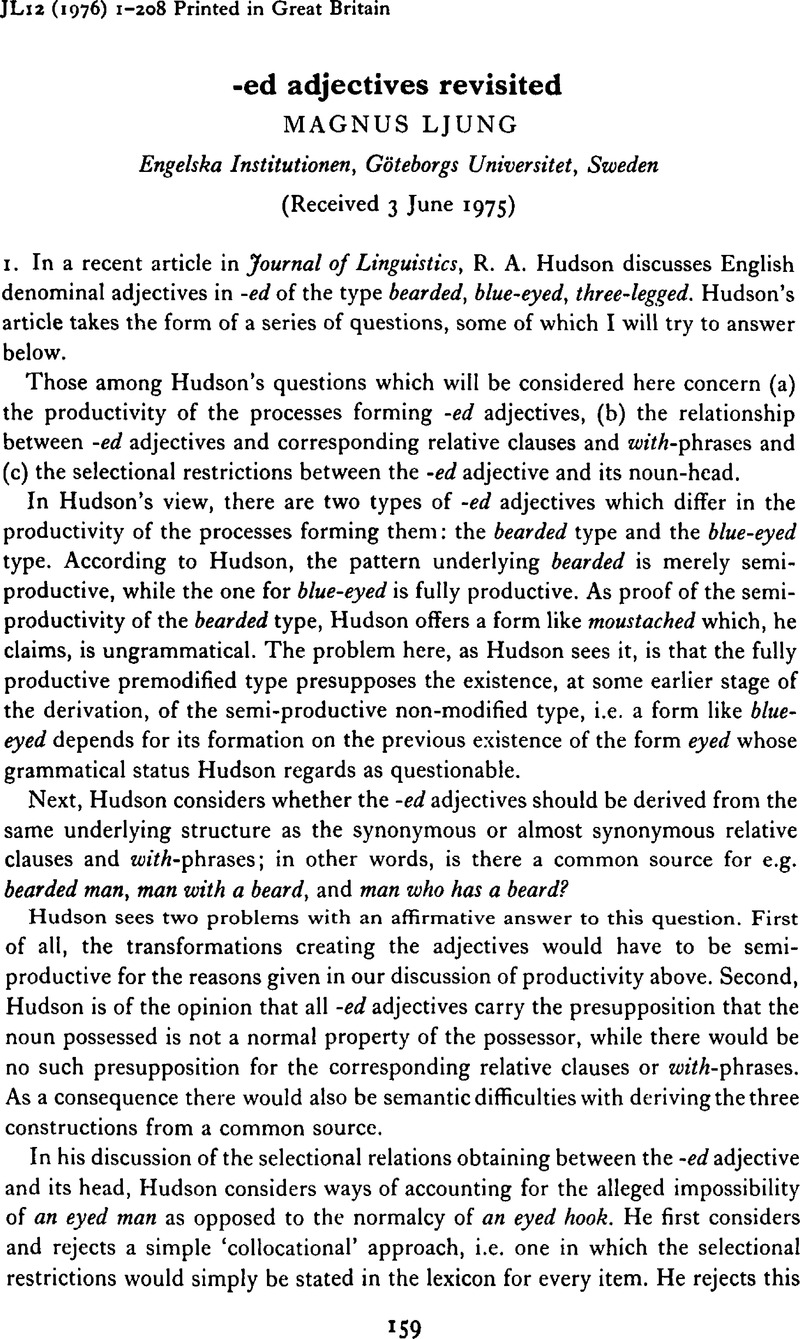Crossref Citations
This article has been cited by the following publications. This list is generated based on data provided by Crossref.
Elliott, Ralph W. V.
Verdonck, J.
Davis, R. Evan
Wiehe, R. E.
Loomis, Chauncey
Zimmermann, Georges‐Denis
Van Cromphout, Gustaaf
Derolez, R.
and
Ljung, Magnus
1976.
Reviews.
English Studies,
Vol. 57,
Issue. 5,
p.
453.
Algeo, John
1999.
The Cambridge History of the English Language.
p.
57.
Lieber, Rochelle
2005.
Handbook of Word-Formation.
Vol. 64,
Issue. ,
p.
375.
Chovanová, Iveta
and
Štichauer, Pavel
2014.
Morphology and Meaning.
Vol. 327,
Issue. ,
p.
141.
Spencer, Andrew
2018.
Adjectives and compounds at the interface Heinz J. Giegerich,Lexical Structures: Compounding and the Modules of Grammar.
Word Structure,
Vol. 11,
Issue. 2,
p.
254.
2020.
Morphologically Derived Adjectives in Spanish.
Vol. 30,
Issue. ,
Sun, Kun
and
Harald Baayen, R.
2021.
Hyphenation as a compounding technique in English.
Language Sciences,
Vol. 83,
Issue. ,
p.
101326.
Ishida, Takashi
2024.
Denominal -ed Adjectives and Their Adjectival Status in English Morphology.
Languages,
Vol. 9,
Issue. 5,
p.
169.



